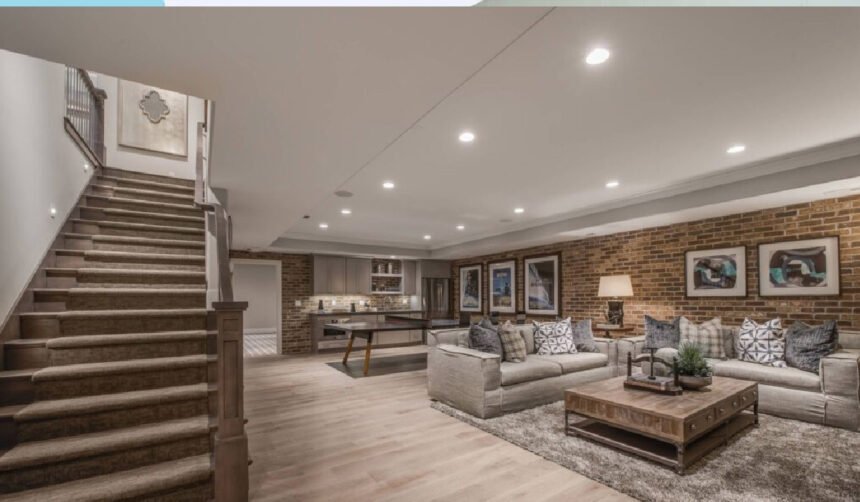Your home is more than just a place to live—it’s a reflection of your personality, your needs, and your lifestyle. Over time, as families grow or design preferences change, the desire to update and improve a living space becomes a natural step. That’s where home remodeling comes in—not just to fix what’s outdated or worn, but to reimagine your home into something that truly fits your life.
From minor upgrades to full-scale transformations, remodeling offers a chance to improve functionality, increase property value, and create a more comfortable and visually appealing space. But where do you start? What should you expect? And how can you ensure a successful outcome?
This guide covers everything you need to know about home remodeling—from planning and budgeting to design choices and contractor selection.
What Is Home Remodeling?
Home remodeling involves altering, improving, or expanding a home’s existing structure and aesthetics. This can include:
- Updating kitchen or bathroom layouts
- Adding extra rooms or converting basements
- Enhancing energy efficiency
- Replacing outdated fixtures or flooring
- Redesigning interior layouts
- Improving accessibility
Unlike simple repairs or maintenance, remodeling is often a mix of aesthetic upgrades and structural improvements that can significantly increase the home’s functionality, comfort, and value.
Reasons to Remodel Your Home
There are many motivations behind a remodeling project, each of which plays a key role in determining the scope and goals:
1. Modernization
Trends change over time. Remodeling helps bring your home up to date with current styles, finishes, and layouts.
2. Improved Functionality
Whether you need more storage, an open-concept design, or better traffic flow, remodeling allows you to adapt your home to fit your lifestyle.
3. Increased Property Value
A well-executed remodel, especially in key areas like kitchens or bathrooms, can significantly boost resale value.
4. Energy Efficiency
Upgrading windows, insulation, and appliances reduces utility bills and your environmental impact.
5. Family Changes
Growing families, aging relatives, or changing personal needs might require extra bedrooms, safer layouts, or added accessibility features.
Popular Home Remodeling Projects
Some rooms offer more return on investment and impact than others. Here are a few of the most popular remodeling projects:
✔ Kitchen Remodels
Often called the heart of the home, kitchen upgrades may include new cabinetry, countertops, flooring, lighting, appliances, and layout improvements.
✔ Bathroom Renovations
Upgrades like walk-in showers, freestanding tubs, double vanities, and modern fixtures make bathrooms more comfortable and luxurious.
✔ Basement Finishing
Transforming an unfinished basement into livable space can add square footage and functionality—ideal for home offices, gyms, or guest suites.
✔ Open Floor Plans
Removing walls between kitchens and living areas creates more connected and sociable spaces, a major trend in modern living.
✔ Room Additions
Adding extra bedrooms, sunrooms, or expanding your living space helps meet changing family needs without moving.
✔ Exterior Enhancements
New siding, roofing, windows, and entryways can elevate curb appeal and protect your home from the elements.
The Home Remodeling Process: Step-by-Step
Remodeling can feel overwhelming, but breaking it into clear stages makes it manageable:
1. Define Your Goals
What do you want to achieve? Make a list of must-haves, nice-to-haves, and potential compromises.
2. Set a Realistic Budget
Determine how much you’re willing to invest. Include a contingency of 10–20% for unexpected costs.
3. Find Inspiration
Use design magazines, Pinterest, or home improvement shows to define your style and preferences.
4. Hire a Professional
Whether it’s an architect, designer, or general contractor, hiring the right expert is key to turning your vision into reality.
5. Design and Planning
Work with your remodeling team to develop a design plan, secure permits, and schedule the project timeline.
6. Construction and Execution
Demolition, construction, installation, and finishing touches are all carefully managed. Regular check-ins keep the project on track.
7. Final Walkthrough
Once complete, review all work with your contractor to ensure everything meets expectations before signing off.
Tips for staying on budget:
- Prioritize your needs over wants
- Get multiple quotes from contractors
- Choose quality materials that offer long-term value
- Avoid frequent design changes mid-project
Choosing the Right Remodeling Contractor
Your contractor will influence every aspect of your remodeling experience, so make sure you choose wisely. Look for:
- Licensing and Insurance: Ensure the contractor is certified and fully insured.
- Experience: Choose professionals with a strong track record in similar projects.
- References and Reviews: Check online reviews and ask for referrals.
- Detailed Proposals: A trustworthy contractor will provide written estimates, timelines, and clearly defined scopes of work.
- Communication: Choose someone who listens well and explains things clearly.
A good contractor doesn’t just build your remodel—they help you make informed decisions every step of the way.
Design Trends in Home Remodeling
While your personal style should drive your remodeling decisions, being aware of current design trends can help you plan a modern, functional space.
✔ Natural Materials
Wood, stone, and organic textures are being used to bring warmth and authenticity into homes.
✔ Smart Technology
Lighting, thermostats, security systems, and appliances can now be integrated with home automation platforms.
✔ Multi-Functional Spaces
Flexible spaces—like offices that double as guest rooms or dining rooms that convert to workspaces—are in high demand.
✔ Minimalist Aesthetic
Sleek lines, neutral color palettes, and clutter-free designs remain popular for their calming effect.
✔ Energy-Efficient Solutions
From solar panels to triple-pane windows, eco-conscious choices are becoming standard in many remodeling plans.
Avoiding Common Remodeling Mistakes
A successful home remodeling project is about more than just great design—it also requires smart planning. Avoid these common pitfalls:
- Underestimating costs: Always budget for surprises.
- Skipping permits: This can lead to fines or issues when selling the home.
- Hiring the cheapest contractor: Price isn’t everything. Look for value and proven skill.
- Ignoring the home’s original structure: Try to design with the home’s existing layout and character in mind.
- Not planning for disruptions: Remodeling can take time and may temporarily displace you from parts of your home.
The ROI of Home Remodeling
Not all upgrades yield the same financial return, but well-planned renovations can offer impressive returns—especially when you plan to sell your home. Here are average returns on common remodeling projects:
| Remodel Type | Average Return on Investment (ROI) |
| Minor Kitchen Remodel | 70% – 80% |
| Bathroom Remodel | 60% – 70% |
| New Windows or Doors | 70% – 85% |
| Deck or Outdoor Addition | 65% – 75% |
| Basement Remodel | 60% – 70% |
Remember, beyond financial return, remodeling adds value in the form of comfort, style, and better use of your space.
Final Thoughts
Whether you’re dreaming of a brand-new kitchen, expanding your living space, or simply updating your interiors, home remodeling offers a powerful way to breathe new life into your home. The key to success lies in careful planning, a realistic budget, and choosing the right team to bring your vision to life.
When done right, remodeling is more than an upgrade—it’s a transformation that can improve your quality of life for years to come. With thoughtful design, trusted professionals, and attention to detail, your ideal home isn’t just possible—it’s within reach.
For More Information, Visit Dotmagazine









